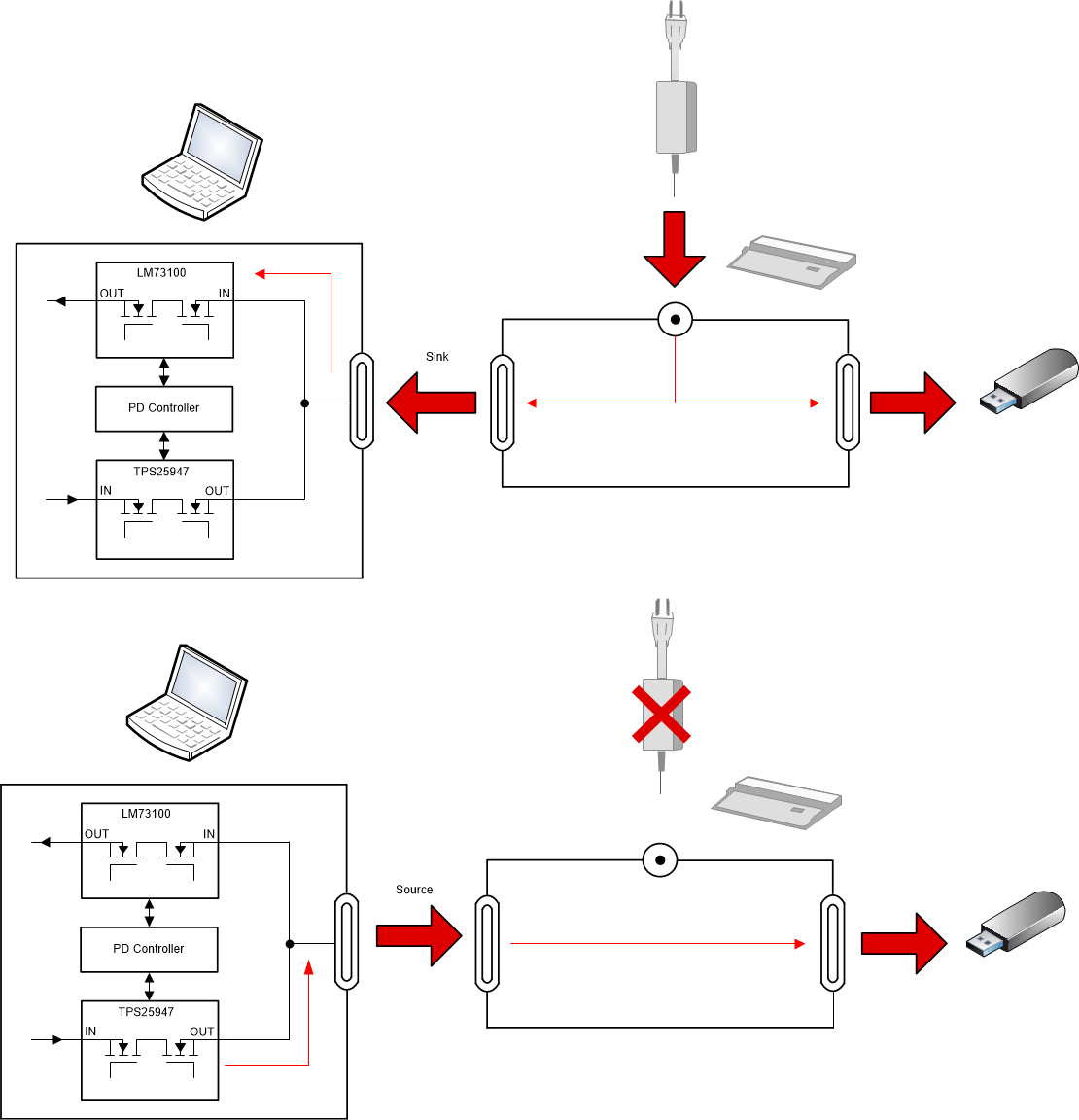SLVAEY2A August 2020 – October 2020 LM7310 , TPS25947
2 Fast Role Swap (FRS) Explained
Fast Role Swap (FRS) Explained
FRS describes the process when the device transitions from a power sink to a power source and vice versa. A laptop docking station, for example, requires robust FRS design and protection to ensure uninterrupted power supply to its accessories when external power disconnects. To further put FRS into perspective, imagine the setup in Figure 2-1: a laptop and its docking station connected through a single USB Type-C. The docking station initially charges the laptop and powers the other accessories through external power source. When the external power is removed, the laptop needs to quickly transition from a power sink to a power source to continuously supply power for its connected accessories. There are two major challenges in FRS:
- The switching time must be less than 150 µs. Denoted by tSrcFRSwap, the time is defined to be from Vbus dropping below 5 V to the new source beginning to supply power at 5 V.
- The Vbus voltage immediately before FRS is uncertain. With external power, the docking station charges the laptop at about 20 V. Once FRS begins, the system needs to promptly switch to the new source within the 5-V specification.
While meeting FRS requirements with fast charging and linear ORing, TPS25947 and LM73100 also feature adjustable overvoltage and undervoltage protection that ensures a smooth FRS within the 5-V specification.
 Figure 2-1 FRS for a Laptop Docking
Station
Figure 2-1 FRS for a Laptop Docking
Station